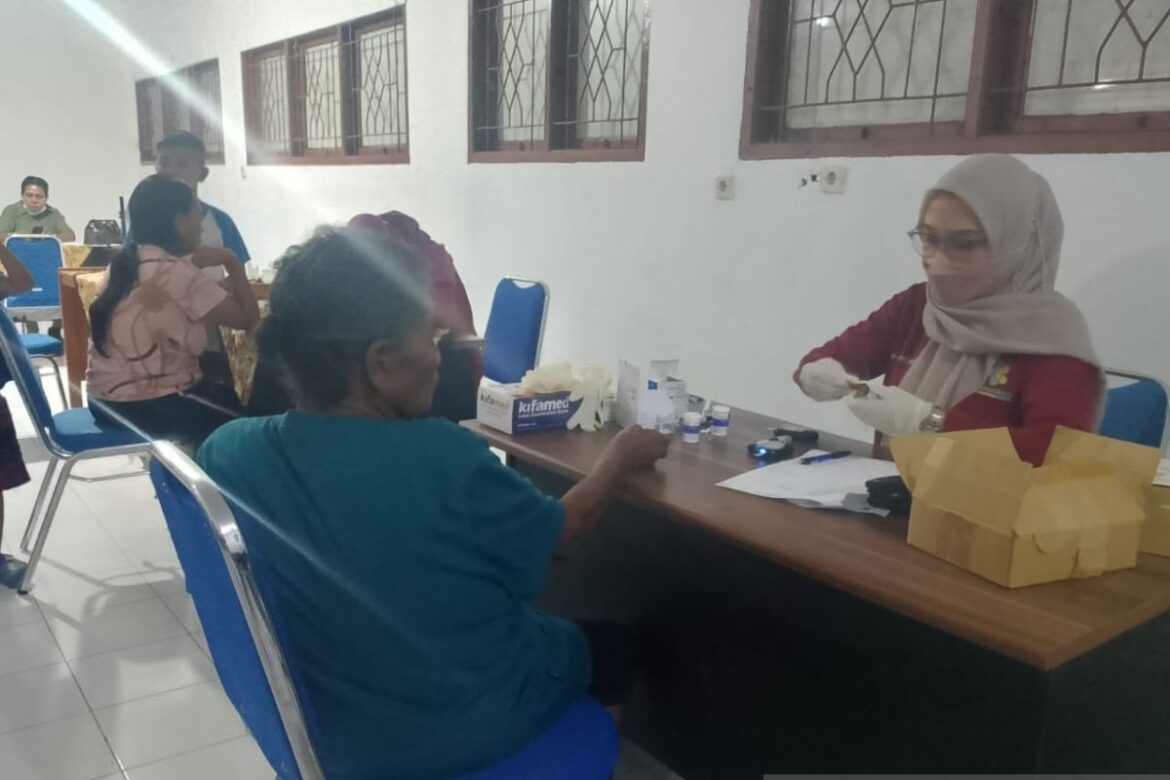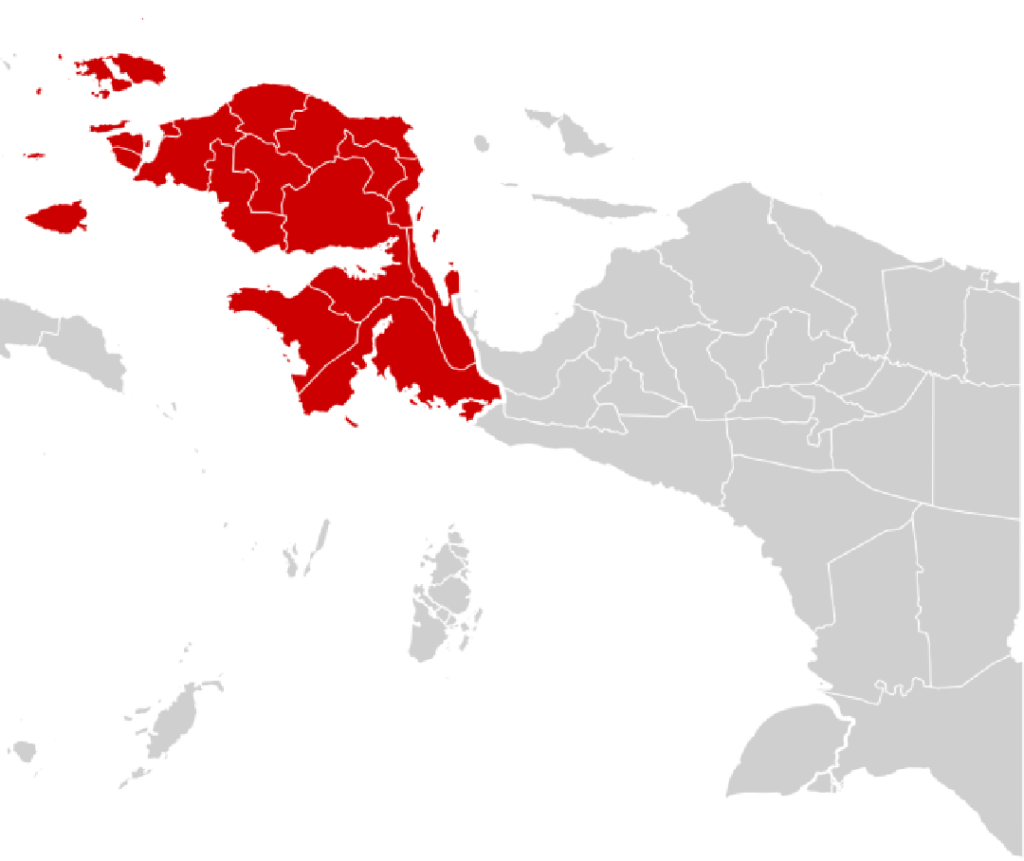In the far-flung islands and rugged highlands of Southwest Papua (Papua Barat Daya), where roads are scarce and the sea often serves as the only pathway between villages, healthcare has long been a pressing challenge. Residents in remote areas once relied on infrequent visits from medical staff or endured long and costly journeys to the nearest city for basic check-up.
Yet, in just three years since becoming Indonesia’s youngest province, Southwest Papua has begun to rewrite that story. Through the Free Health Check Program (Cek Kesehatan Gratis, or CKG) and the mobile doctor initiative, thousands of people who once had little or no access to preventive healthcare are now receiving regular screenings, early diagnoses, and, in some cases, specialized treatments brought directly to their doorstep.
The results are striking. By mid-2025, the province ranked second across the entire Papua region for successful implementation of the CKG program, a milestone that highlights how far this new administration has come in building health equity. Beyond numbers, however, it is the human stories—from civil servants in Sorong to families in the remote islands of Raja Ampat—that truly illustrate the program’s impact.
From Vision to Reality: The Free Health Check Program
The Free Health Check Program was introduced by the Indonesian government to improve preventive healthcare across Papua’s provinces. The principle is simple but powerful: offer free screenings for common yet dangerous conditions such as hypertension, diabetes, cholesterol imbalance, and uric acid buildup. By detecting risks early, the program reduces the likelihood of severe illness, hospitalizations, and premature deaths.
In Southwest Papua, implementation started slowly due to timing. The program launched after the province’s annual budget planning cycle had concluded, which meant procurement of medical supplies lagged behind the ambitious schedule. Health officials had to juggle limited resources, adjusting priorities while submitting urgent requests to the Ministry of Health through its digital platform.
Despite these hurdles, the province pressed on. By September 2025, five of its six districts and cities had achieved full participation in the program. Only Raja Ampat—the famed island regency often described as one of the world’s last tropical paradises—lagged behind. But even there, officials celebrated an 80 percent participation rate, no small feat given that communities are scattered across more than 1,500 islands.
Dr. Naomi Netty Howay, head of the provincial health office, praised the resilience of local teams. “We started with little, but we worked with what we had. The priority is always the people’s health. Every check up completed is one life potentially saved,” she told local media.
A Day of Health in Sorong: Civil Servants Lead by Example
One vivid illustration of the program’s success came on August 8, 2025, when the provincial health office held a large-scale health check for civil servants (ASN) and new recruits (CPNS) in Sorong.
The event began with an energetic morning exercise in the courtyard, symbolizing the union of prevention and practice. Then, hundreds of participants lined up for blood pressure checks, glucose tests, cholesterol screenings, and consultations with doctors and nurses.
For many, it was the first time they had taken part in a structured, government-provided health exam. “I didn’t realize my blood sugar was high until today,” said one participant, a middle-aged civil servant who asked not to be named. “Now I know, and I can take action early. I’m grateful this program exists.”
Provincial Secretary Yakob Kareth, who opened the event, emphasized the importance of awareness. “We must not wait until we are sick to seek care. Prevention saves lives, and this program is a gift we should all use,” he said.
The screenings were more than symbolic. Those flagged with concerning results received immediate referrals, starting at local puskesmas (community health clinics) and, if necessary, progressing to hospitals for specialized care. This follow-up system is one of the program’s strengths, ensuring participants are not left with only a diagnosis but guided toward treatment.
Overcoming Geography: The Mobile Doctor Initiative in Raja Ampat
If the Free Health Check Program is the backbone of prevention, the mobile doctor initiative is the spearhead of access. Few regions in Indonesia present such logistical challenges as Raja Ampat, where turquoise seas, lush limestone cliffs, and scattered islands also mean that healthcare delivery is a monumental task.
To tackle this, the provincial government sends teams of doctors and health workers on periodic missions, effectively turning boats and clinics into mobile hospitals. The most recent mission, led by Dr. Susi Wanane, brought together internists, pediatricians, general practitioners, lab technicians, nutritionists, and supporting staff.
Anchoring at the Waisai Clinic, the team provided consultations, laboratory tests, and treatments to around 400 patients. The original target had been 1,000, but even reaching nearly half was considered a victory given the remoteness of many villages. “For some of these patients, it was their first encounter with a medical specialist,” Dr. Susi explained. “You can imagine what it means for a mother to finally ask a pediatrician directly about her child’s condition, instead of traveling days to Sorong.”
The mobile doctors did more than treat illnesses—they built trust. Health education sessions taught families about nutrition, maternal care, and the importance of follow-up visits. Referrals were made for those needing further treatment, ensuring continuity beyond the team’s visit.
The initiative is not a one-off campaign. For the past three years, since the province’s creation, mobile health missions have become routine, likened by officials to “giant posyandu” (integrated health posts) that bring together multiple services—from child immunization to elderly care—in a single outreach event.
The Human Side of Healthcare
Behind statistics and rankings lie personal stories that illustrate why these programs matter. Maria, a grandmother from Waisai, had been struggling with fatigue for months but dismissed it as part of aging. During a mobile doctor visit, she discovered her blood pressure was dangerously high. With medication provided on the spot and a referral for follow-up, Maria now understands her condition and how to manage it. “Without the doctors coming here, I might never have known,” she said.
Similarly, Yohanes, a young civil servant in Sorong, admitted he had never done a cholesterol test before. “I always thought I was healthy because I’m still young. But the free check showed early signs of risk. Now I’ve changed my diet.”
These individual stories reflect a broader truth: access to basic health information can be life-changing. By making checks free and widely available, the province lowers barriers that once kept people away from preventive care.
Challenges That Remain
Despite the impressive progress, Southwest Papua’s healthcare journey is far from finished.
- Supply Chains: Delays in medical supplies remain a recurring challenge. Ensuring that clinics and mobile teams have enough equipment, test kits, and medicines is essential for sustainability.
- Geography: With thousands of islands and vast seas, logistics will always be difficult. Creative solutions—from mobile boats to telemedicine—must continue to evolve.
- Awareness: While participation is rising, not everyone yet understands the value of preventive health checks. Continued education and outreach are critical.
- Integration: Linking free screenings with consistent treatment pathways requires strong coordination between puskesmas, hospitals, and referral systems.
Officials remain optimistic. “We are still building, but the foundation is there,” said Dr. Naomi. “With time and consistent effort, this province can be an example for others.”
Why Southwest Papua’s Experience Matters Nationally
Southwest Papua is not just another local success story; it offers valuable lessons for Indonesia as a whole.
- Equity in Action: It demonstrates that even in the most remote and resource-challenged regions, healthcare equity is achievable with the right strategy.
- Integration of Services: By combining free screenings with mobile doctor missions, the province has built a continuum of care that others can replicate.
- Sustainability: Making outreach routine rather than exceptional ensures long-term impact, setting a model for provinces with similar geographic barriers.
For Indonesia’s national vision of universal health coverage, Southwest Papua provides both inspiration and practical pathways.
Conclusion
In just a short span, Southwest Papua has gone from being Indonesia’s newest province to a leader in healthcare innovation. By ranking second in free health check implementation and rolling out consistent mobile doctor missions, it has proven that distance, geography, and resource challenges are not insurmountable barriers.
The journey is ongoing, and challenges remain, but the trajectory is clear: toward a healthier, more resilient population. For the grandmother in Raja Ampat, the civil servant in Sorong, and thousands of others across the islands, these programs mean more than statistics. They mean peace of mind, dignity, and the possibility of a longer, healthier life.
As Indonesia continues to celebrate its independence and strive for equitable development, the story of Southwest Papua’s healthcare transformation stands as a reminder: progress is possible, even in the most distant corners of the archipelago, when government, professionals, and communities work hand in hand.


